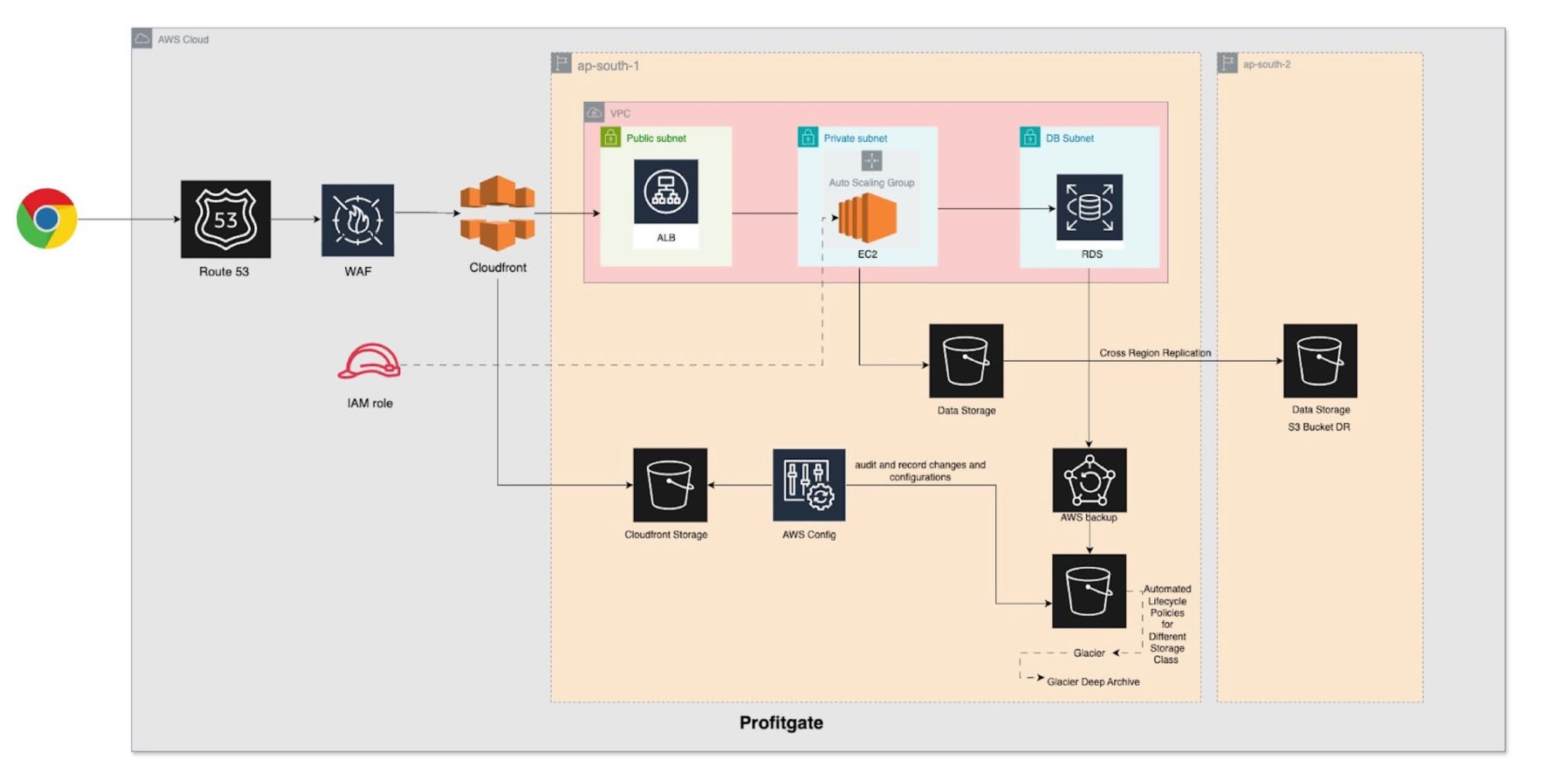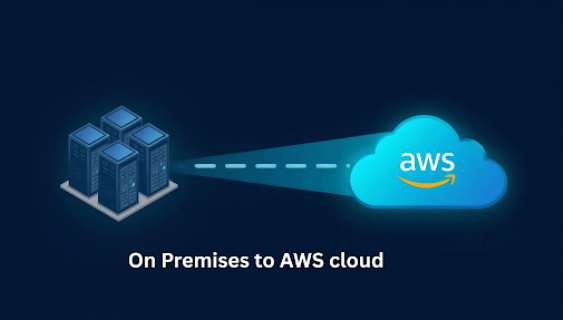Storage-Led Cloud Transformation for ProfitGate with Infimatrix on AWS

Storage-Led Cloud Transformation for ProfitGate with Infimatrix on AWS
Executive Summary
ProfitGate, a SEBI-regulated PMS firm, faced growing challenges with compliance, fragmented backups, and unreliable recovery processes. Manual retention efforts and legacy storage systems created operational risk and limited visibility.To address this, ProfitGate partnered with Infimatrix to implement a storage-centric AWS architecture, featuring Amazon S3 with Object Lock, lifecycle tiering, AWS Backup, and cross-region replication. The solution helped in 90% reduction in manual effort, 25% lower storage costs and full compliance with SEBI retention mandates — transforming storage into a foundation for resilience and control.
Customer Overview
ProfitGate is a financial services firm offering tailored Portfolio Management Services (PMS) across pan India. As a SEBI-regulated entity, the firm handles data that must be retained securely, immutably, and compliantly without much operational overhead and cost-effective backup options. To support its cloud-first strategy, ProfitGate prioritized building a storage architecture that enables compliance, scale, and less management overhead. The company partnered with Infimatrix to reimagine its AWS storage environment as the foundation for regulatory trust, operational continuity, and long-term cost efficiency.
Business Challenge
- Lack of a standardized approach to data classification, resulting in inconsistent backup and retention practices.
- Inability to enforce regulatory compliance requirements such as immutable storage across all environments.
- Manual tracking of storage usage and retention policies led to errors, inefficiencies, and audit risks.
- Difficulty in aligning backup and archival schedules with varying RPO/RTO needs across business units.
- High operational overhead in validating and enforcing Object Lock and lifecycle policies at scale.
- Absence of centralized visibility into storage cost attribution, making budget forecasting and chargeback complex.
- Disparate tagging structures across workloads prevented automation and policy-driven data management.
- Increasing risk of non-compliance in a highly regulated industry without consistent policy enforcement mechanisms.
Solution
Infimatrix architected a native AWS-based primary storage solution for ProfitGate, centered on Amazon S3. To enforce immutability and regulatory compliance, S3 Object Lock was enabled in compliance mode alongside S3 Versioning, allowing the team to preserve and recover all historical versions of critical financial records. Multi-part upload was configured to improve performance for large object uploads, and access was strictly governed using a combination of S3 bucket policies and fine-grained IAM roles. This ensured that only authorized roles could access or manage storage assets, adhering to the principle of least privilege.
Storage tagging played a central role in organizing and automating data management. Infimatrix implemented consistent tagging strategies across buckets, objects, and EBS volumes. These tags allowed for cost allocation by business units, automatic application of S3 lifecycle policies, and seamless inclusion of resources into AWS Backup plans. Tag-based automation ensured scalability as new data sources were introduced, without requiring manual updates to the protection framework.
Infimatrix monitored storage access patterns using S3 Access Logs and CloudWatch metrics to identify low-frequency access datasets. Based on this analysis, automated lifecycle rules were applied to transition data from S3 Standard to S3 Glacier and S3 Glacier Deep Archive tiers, depending on retrieval latency tolerances and retention timelines. These transitions helped reduce storage costs by 25%, while still aligning with SEBI’s seven-year archival mandates. For example, transaction reports were pushed to Glacier Deep Archive, while monthly compliance snapshots were retained in S3 Glacier for quicker recovery.
Amazon EBS was optimized by selecting appropriate volume types for different workloads. gp3 volumes were used for general-purpose workloads, and where necessary, volumes were right-sized or switched to throughput-optimized st1 based on I/O profiles captured from CloudWatch. AWS Backup was configured to capture snapshots of EBS volumes and RDS databases, with policies in place to retain daily backups for 30 days and weekly ones for up to 3 months. Older snapshots were automatically deleted to prevent unnecessary cost accumulation. Unattached EBS volumes were scanned weekly using Lambda functions and removed after final snapshot capture, further improving cost hygiene.
Performance and protection monitoring was enabled using CloudWatch dashboards and SNS alerts, which informed the team of any failed backups, misconfigurations, or IAM anomalies. Cost Explorer and tagging allowed finance teams to track backup and storage spend across environments and business units. Infimatrix also used Amazon CloudTrail and AWS Config to monitor storage policy enforcement, bucket access patterns, and configuration drift, giving administrators a centralized and audit-ready view of the storage landscape.
To enhance performance and secure access to archived reports, Amazon CloudFront was placed in front of critical S3 buckets. AWS WAF was used alongside CloudFront to inspect incoming requests and block potential threats at the application edge. TLS was enforced across all data in transit, and server-side encryption with AWS KMS (SSE-KMS) was used for all data at rest, including snapshots, objects, and backups.
The architecture was built with Well-Architected Framework principles, emphasizing security, reliability, operational excellence, and cost optimization. By aligning storage class choices, backup frequency, and snapshot management to ProfitGate’s recovery targets, Infimatrix enabled the organization to meet an RPO of 15 minutes and an RTO of under 30 minutes for its critical compliance workloads. Despite not operating at massive data volumes, the solution demonstrated strong technical complexity and compliance alignment by deeply integrating AWS-native services, policy automation, and governance features.
Business Outcomes
- Achieved 100% SEBI compliance on data retention, immutability, and audit-readiness
- Reduced manual storage management effort by over 90% through lifecycle automation and centralized backup orchestration
- Lowered long-term storage costs by 25% using S3 tiering, Glacier archival, and EBS snapshot cleanup policies
- Met business continuity goals with RTO under 30 minutes and RPO of 15 minutes, validated via recovery drills
- Enabled full observability and cost transparency with tag-based cost allocation, CloudWatch dashboards, and real-time alerts
- Improved data protection posture with S3 Object Lock, versioning, cross-region replication, and IAM-based access controls
- Strengthened governance and compliance auditing via AWS Config, CloudTrail, and WAF integration
AWS Services Used:
- Amazon S3 (Object Lock, Versioning, Lifecycle)
- S3 Glacier, Glacier Deep Archive
- Amazon EC2
- Amazon RDS
- AWS Backup
- IAM, KMS, AWS Config, CloudTrail
- CloudWatch, SNS
- AWS CloudFront
- AWS WAF
About Infimatrix :
As an Advanced Tier Partner of AWS, Infimatrix delivers world-class cloud solutions, helping businesses seamlessly migrate to the cloud, optimize performance, and achieve scalable growth. By leveraging AWS’s powerful suite of tools and services, we provide end-to-end support across migration, security, compute, and more, empowering businesses to innovate and stay ahead in today’s competitive landscape.
Architectural Diagram :




